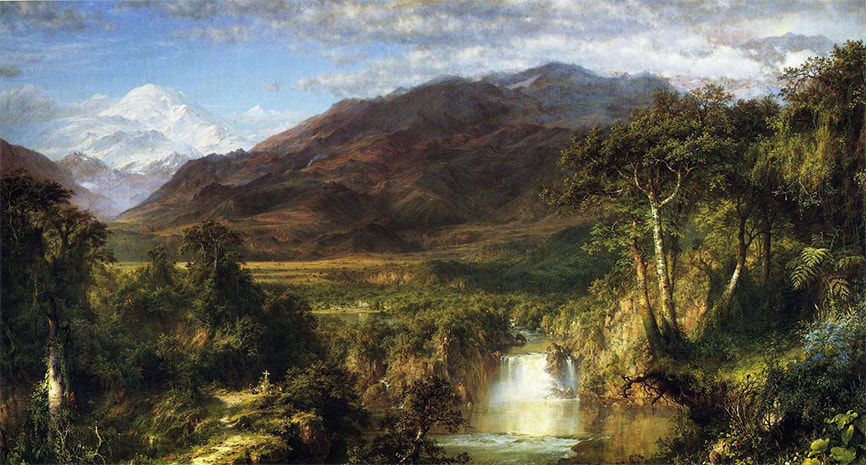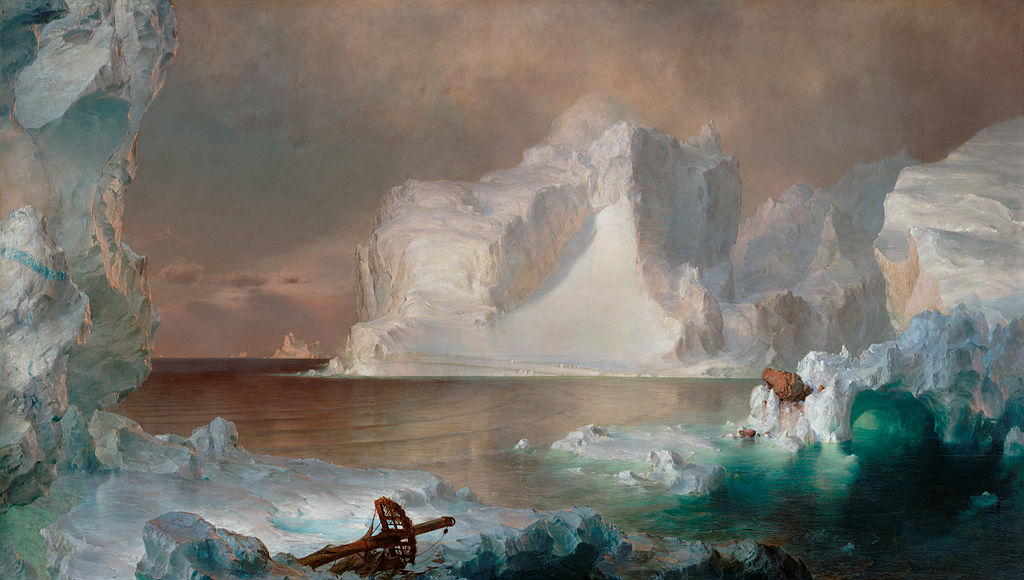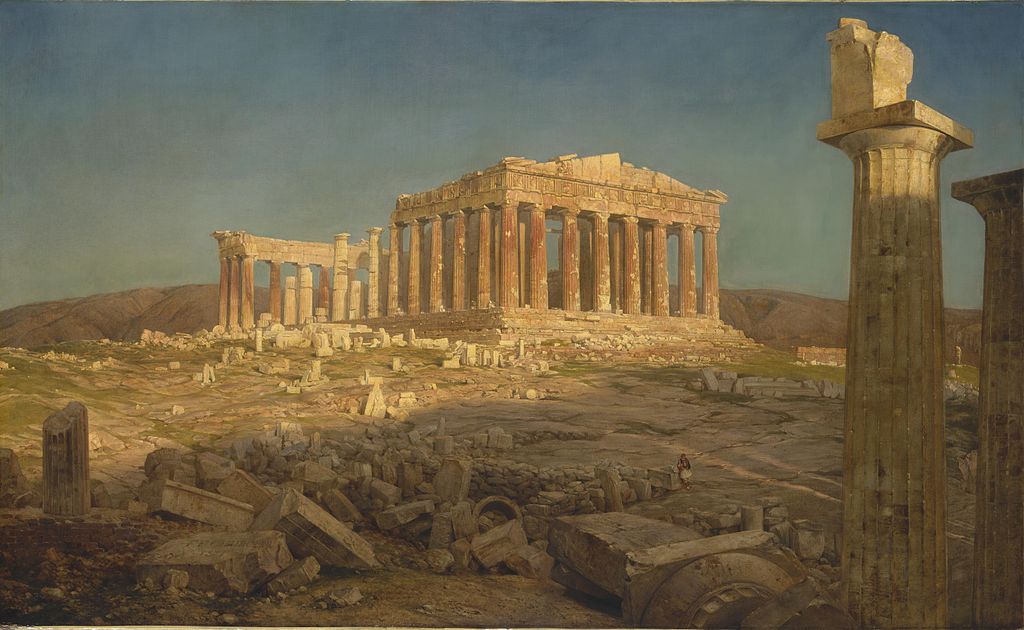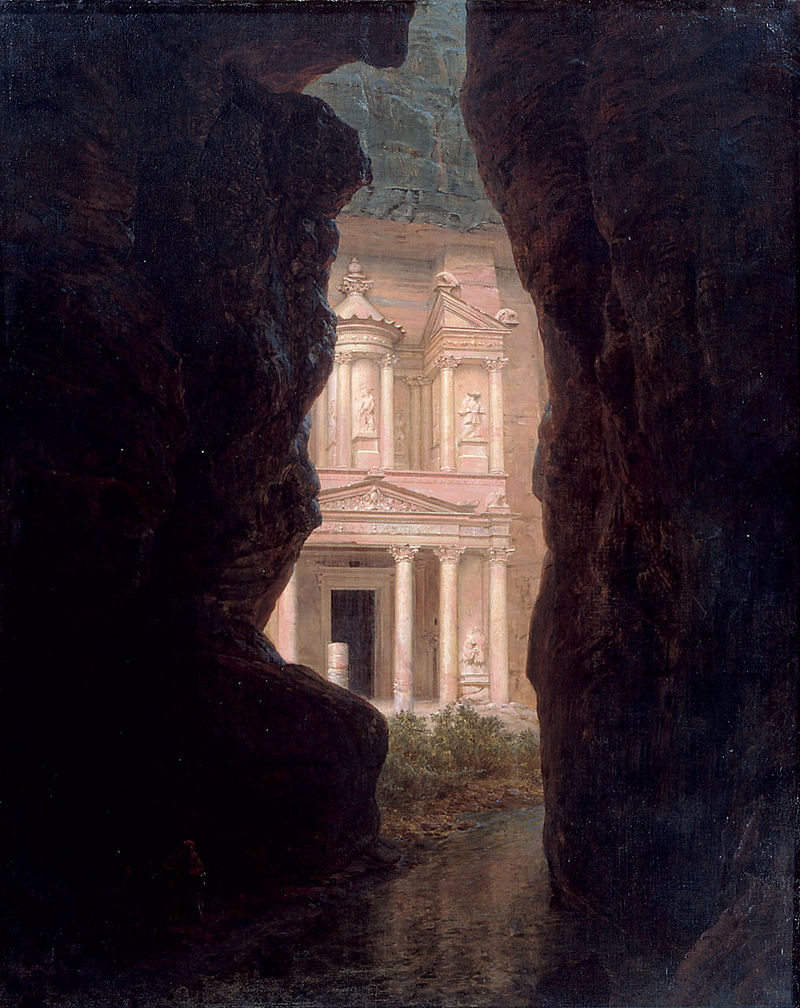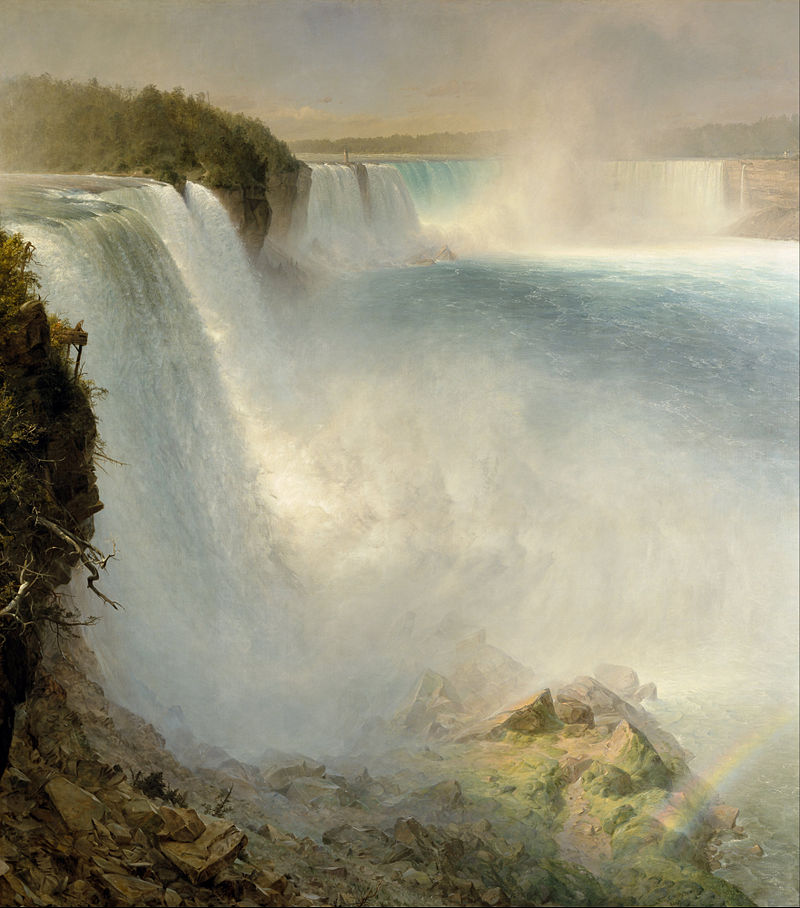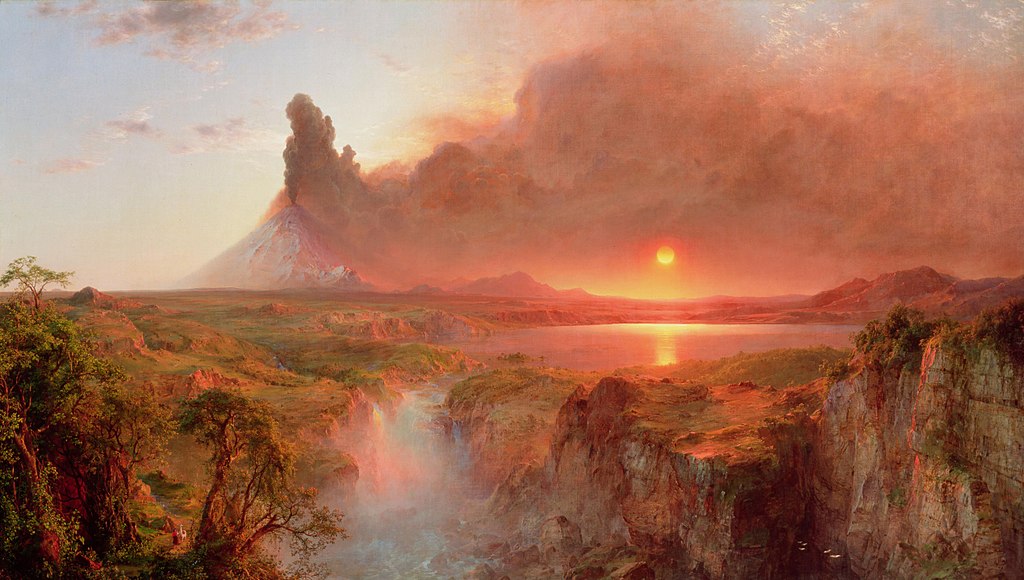An Appreciation:
|
Two of Church's early masterpieces: "Niagara" (above) and "The Heart of the Andes" (below).
Although Church is associated with American landscapes, he traveled extensively. In 1859, he journeyed to Newfoundland and Labrador to sketch icebergs.
In the late 1860s, Church traveled to Europe and the Middle East where he was inspired by the Parthenon (above) and the ancient city of Petra (below).
Church supported the Union during the Civil War and painted "Our Banner in the Sky" (above).
Above: "Niagara Falls from the American Side."
Below: "Cotopaxi." |
Artist appreciation - Frederic Church

